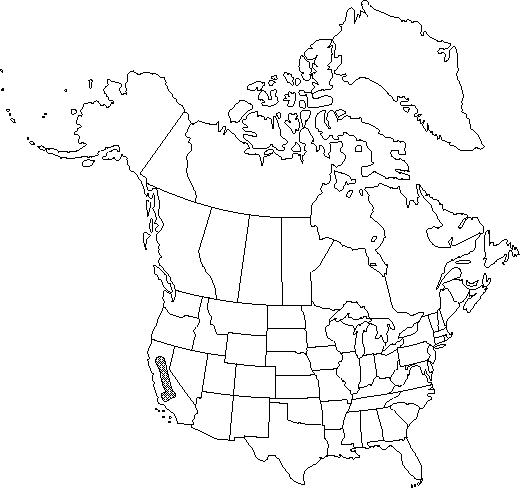Difference between revisions of "Delphinium recurvatum"
Pittonia 1: 285. 1889.
FNA>Volume Importer |
imported>Volume Importer |
||
| (2 intermediate revisions by 2 users not shown) | |||
| Line 60: | Line 60: | ||
|publication year=1889 | |publication year=1889 | ||
|special status=Conservation concern;Endemic | |special status=Conservation concern;Endemic | ||
| − | |source xml=https:// | + | |source xml=https://bitbucket.org/aafc-mbb/fna-data-curation/src/2e0870ddd59836b60bcf96646a41e87ea5a5943a/coarse_grained_fna_xml/V3/V3_1010.xml |
|genus=Delphinium | |genus=Delphinium | ||
|section=Delphinium sect. Diedropetala | |section=Delphinium sect. Diedropetala | ||
Latest revision as of 21:45, 5 November 2020
Stems (18-)30-50(-85) cm; base reddish, glabrous. Leaves: basal leaves 0-2 at anthesis; cauline leaves 3-7 at anthesis; petiole 1-8 cm. Leaf blade round to pentagonal, 1-4 × 1.5-6 cm, nearly glabrous; ultimate lobes 3-11, width 3-15 mm (basal), 1-10 mm (cauline). Inflorescences (8-)10-25(-47)-flowered, narrowly pyramidal; pedicel ± spreading, (0.5-)1.5-4(-6) cm, nearly glabrous; bracteoles 3-8(-18) mm from flowers, green, sometimes margins white, lanceolate to linear, 3-5(-8) mm, nearly glabrous. Flowers: sepals light to sky blue (becoming bluer upon drying), puberulent, lateral sepals reflexed, 11-16 × 5-7(-9) mm, spurs straight to gently upcurved, ascending 0-30° above horizontal, 10-15(-18) mm; lower petal blades elevated, ± exposing stamens, 5-8 mm, clefts 0.5-2.5 mm; hairs mostly centered on inner lobes near base of cleft, white. Fruits 8-21 mm, 2.2-3 times longer than wide, puberulent. Seeds: seed coat cells brick-shaped, cell margins undulate, surfaces roughened. 2n = 16.
Phenology: Flowering spring.
Habitat: Grassland, Atriplex scrub
Elevation: 30-600 m
Discussion
Of conservation concern.
Delphinium recurvatum has a very restricted distribution in the Central (especially San Joaquin) Valley. This species was probably much more common in the past; most of its habitat has been converted into irrigated croplands. Delphinium recurvatum grows in poorly drained, alkaline soils on valley floors.
Hybrids are known between Delphinium recurvatum and D. gypsophilum, D. hesperium, D. parryi, and D. variegatum. Delphinium recurvatum is most likely to be confused with D. gypsophilum or D. hesperium subsp. pallescens. Distinguishing features are found in discussions of those taxa.
Selected References
None.
